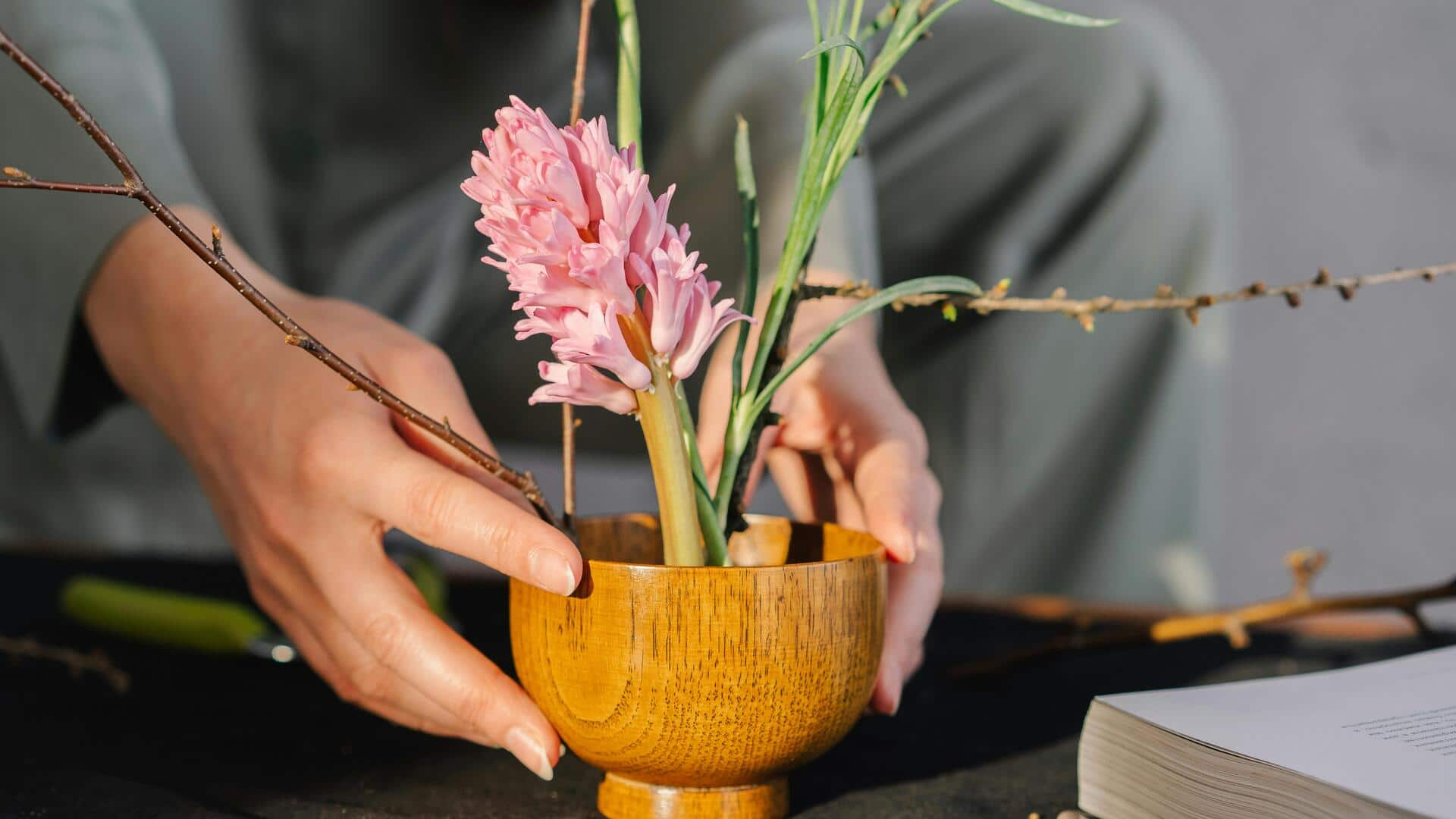
5 beautiful lessons from Japanese ikebana
What's the story
Ikebana, the traditional Japanese art of flower arrangement, is so much more than just putting together a bunch of flowers. It emphasizes harmony, balance, and simplicity, making it an art form that requires patience and precision. Unlike Western floral arrangements, which may prioritize abundance and color, ikebana focuses on line, balance, and harmony with nature. Here are five unique aspects of this ancient practice.
#1
Emphasis on line and form
In ikebana, the line is everything. It emphasizes the shape and structure of each element used in the arrangement. Stems are often bent or manipulated to create dynamic lines that draw the eye through the composition. This focus on line gives an arrangement its unique character and beauty.
#2
Minimalism at its core
Ikebana is all about minimalism. Practitioners use only a few elements to create a powerful visual impact. This restraint encourages one to appreciate the beauty in simplicity, and encourages creativity within limits. The minimalist approach also reflects the philosophy of finding beauty in imperfection.
#3
Seasonal awareness
Seasonality is key in ikebana. Arrangements are often made with flowers or plants that are in season, which keeps the connection with nature strong. This practice not only promotes environmental awareness but also ensures that each arrangement is unique and reflective of the time of year.
#4
Spiritual connection
Ikebana is a spiritual practice as much as it is an art form. Practitioners often meditate while arranging flowers, seeking inner peace and mindfulness. The act of creating an arrangement is seen as a way to connect with nature and oneself on a deeper level.
#5
Tools and techniques
The tools used in ikebana are also important to its practice. Practitioners use special vases called kenzan or pin holders to keep stems upright without hiding them from view. Scissors are used for precise cuts that help prolong the life of each plant material used in arrangements.